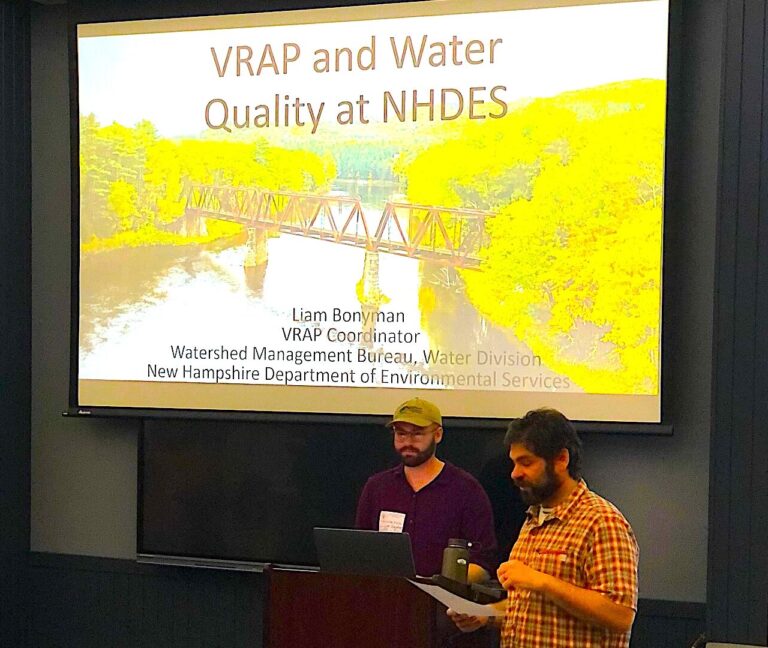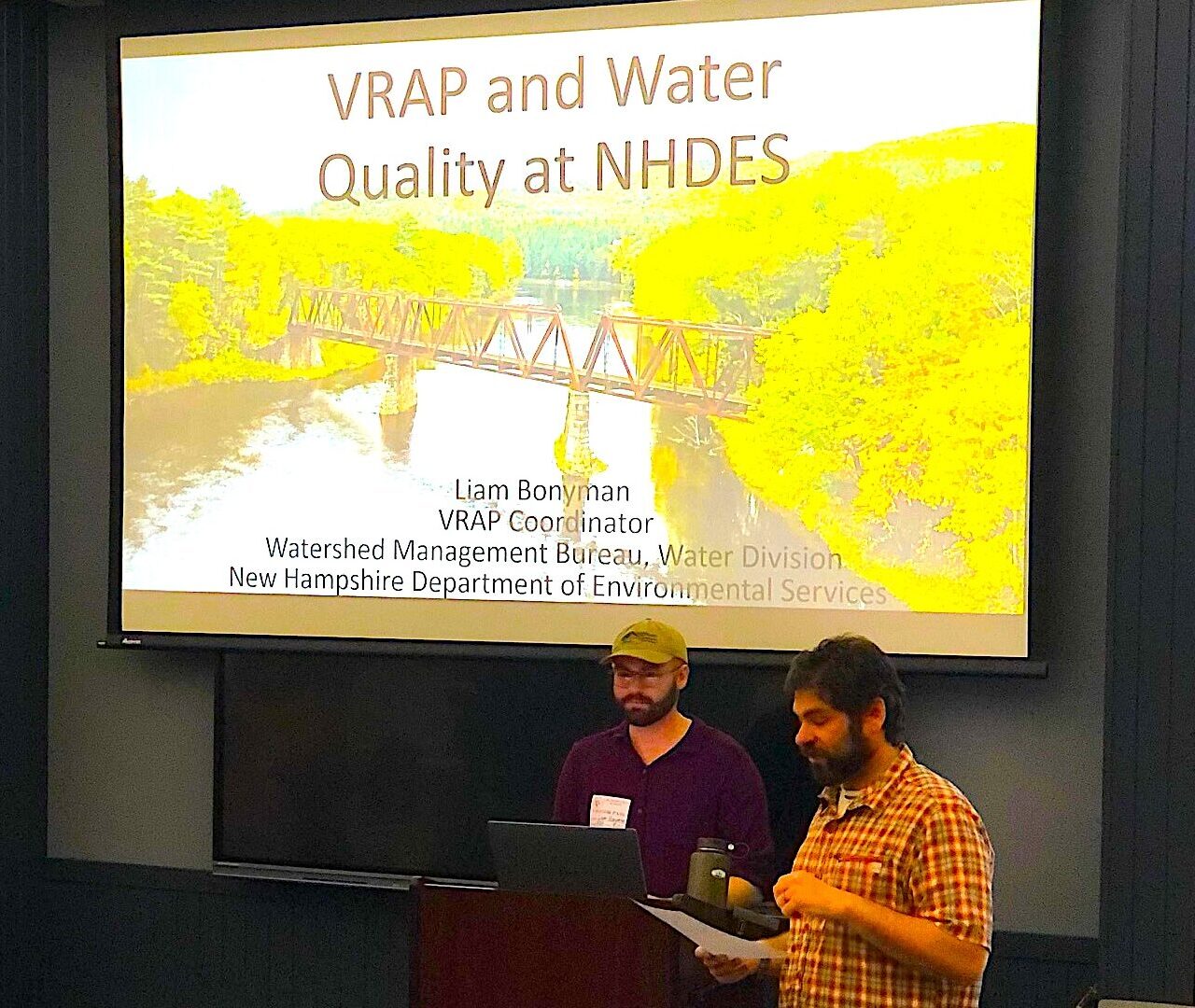Elaine Loft, Staff Writer
To complement the 8th grade study of water quality, science teacher Ross Feitlinger invited Liam Bonyman, from the NH Department of Environmental Services (Watershed Management Bureau), to present information about the Volunteer River Assessment Program (VRAP). Bonyman coordinates the program, which was established in 1998. There are currently 31 volunteer groups sampling water across the state, with the goal of monitoring and maintaining river and stream health.
Bonyman first asked the students to name the signs of a healthy river. Hands shot up, and the list was completed with the correct answers: good biodiversity; native vegetation along the riverbanks; stable water levels and flow rates; stable temperatures; the presence of indicator species.
The bulk of the presentation addressed all the elements that are tested, including: dissolved oxygen; pH, turbidity; conductivity; and temperature.
Bonyman concluded,
“This data reveals important information about the health of the freshwater ecosystems across the state. River monitoring is necessary in order to measure how water quality in streams and rivers changes over time, and to assure public safety. Without the volunteers who participate in VRAP, we wouldn’t otherwise be able to collect such a large amount of data.”
Feitlinger emphasized that throughout the school year, water quality is the overarching topic in 8th grade science.
“Everything the students learn comes back to the stream and the ecosystem. They are trying to answer/determine if the “Derryfield Stream” (an unnamed brook to Merrimack River), is a healthy ecosystem. I take the students outside five to six times throughout the year to test the water and observe the surrounding ecosystem.”



